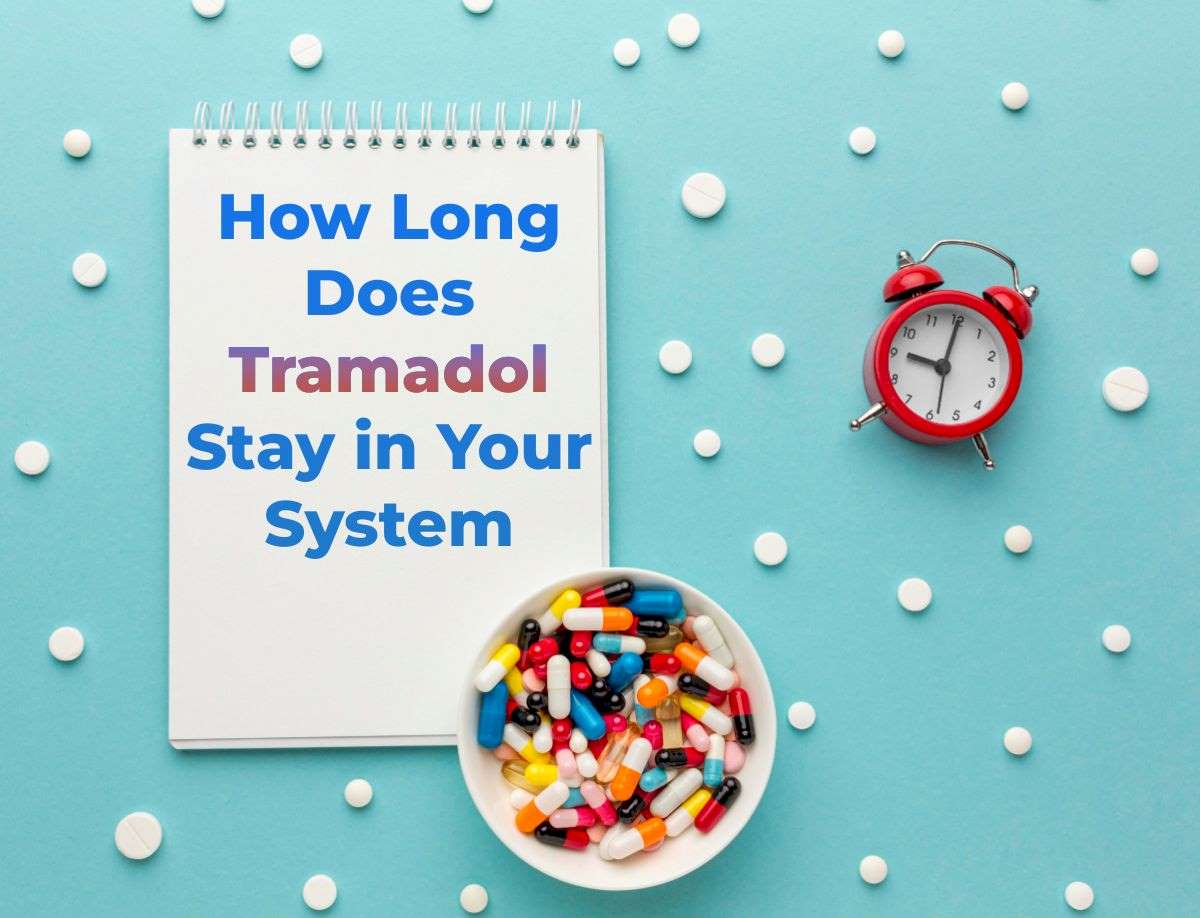Tramadol is a medication commonly used to manage moderate to severe pain. Understanding how long it stays in your system is essential for various reasons, including adhering to prescribed dosages, avoiding drug interactions, and preparing for drug tests. This article provides an in-depth look at tramadol, its effects, and factors influencing its duration in the body.
What Is Tramadol?
Tramadol is a prescription medication used primarily to manage moderate to severe pain. It is categorized as an opioid analgesic but has a unique mechanism of action compared to other opioids. Tramadol is available in various forms, such as tablets with instant release, extended-release tablets, and capsules, making it versatile for pain management.
How Does Tramadol Work?
Tramadol functions through a dual mechanism to relieve pain:
- Opioid Receptor Binding: Tramadol binds to opioid receptors in the brain and spinal cord. These receptors are part of the body’s natural pain control system. By attaching to these receptors, tramadol helps block the transmission of pain signs from the body to the brain, thus decreasing the pain sensation.
- Neurotransmitter Modulation: Besides its opioid effects, tramadol influences neurotransmitters, particularly serotonin and norepinephrine. It inhibits the reacquisition of these neurotransmitters, increasing their levels in the brain. This action can enhance overall pain relief by improving the modulation of pain signals and contributing to the analgesic effects.
How Long Does Tramadol Stay in Your System?
| Testing Method | Detection Time | Description |
|---|---|---|
| Half-Life | 6 to 7 hours (Immediate-Release) 7 to 8 hours (Extended-Release) | The time it takes for the concentration of tramadol in the bloodstream to reduce by half. |
| Urine | 2 to 4 days | Commonly used for drug testing due to its ability to detect a range of drugs and their metabolites. |
| Blood | Up to 24 hours | Less standard for routine drug screening but used in specific situations. |
| Saliva | 1 to 2 days | Less invasive and often used for immediate drug testing. |
| Hair | Up to 90 days | Provides a long-term view of drug use as tramadol is incorporated into hair shafts as they grow. |
The table above provides a clear and organized view of how long tramadol can be detected by different testing methods. This visual representation can help you quickly understand the detection windows and their implications. Whether you’re dealing with drug testing or simply monitoring tramadol’s presence in your system, this table offers a concise summary of critical information. If you have any concerns or questions, it’s always best to consult a healthcare professional for personalized advice and support.
What Can Impact How Long Tramadol Stays in Your System?
Several factors can influence the duration tramadol remains detectable in your body. Understanding these factors can help you manage medication schedules, avoid potential interactions, and prepare for drug testing.
Dosage and Frequency
The amount of tramadol taken and how often it is used play a significant role in how long it stays in your system. Higher doses & more frequent use can extend the time the drug remains detectable. When introduced in larger quantities or over a more extended period, the body requires more time to process and eliminate tramadol. This is due to the cumulative effects of the drug in the system, which can lead to prolonged retention.
Metabolism
Metabolism is critical in how tramadol is processed and cleared from the body. Individuals with faster metabolisms can break down and eliminate tramadol more swiftly than those with slower metabolisms. Several factors, including genetic predispositions, age, and overall health, can influence metabolic rates. Faster metabolic rates facilitate quicker drug clearance, while slower metabolism can result in a longer duration of the drug in the system.
Age
Age significantly impacts drug metabolism and clearance. Older adults often experience slower drug clearance due to decreased liver and kidney function, which can affect how tramadol is processed and eliminated. As people age, the efficiency of these organs tends to diminish, leading to a longer retention time for tramadol in the body. Consequently, older individuals may need to be more cautious with dosage and duration of use.
Health Conditions
Pre-existing health conditions, particularly those affecting the liver and kidneys, can significantly influence tramadol metabolism and excretion. Both the liver and kidneys play essential roles in breaking down and removing drugs from the body. Impaired liver function can decelerate the metabolism of tramadol, while compromised kidney function can hinder its excretion. This can lead to a extended presence of tramadol in the body, potentially increasing the risk of side effects.
Hydration and Diet
Hydration and diet also impact how effectively tramadol is eliminated from the body. Adequate hydration supports kidney function, which is crucial for the excretion of tramadol through urine. Drinking enough fluids helps to maintain proper kidney function and facilitates the removal of the drug from the system. A balanced diet supports overall health and can indirectly affect drug metabolism and elimination.
Other Medications
Other medications can influence how tramadol is processed and how long it stays in the system. Certain drugs can interact with tramadol, affecting its metabolism and clearance. For example, some antidepressants and other opioids can alter tramadol’s metabolic pathways, leading to changes in how long it remains detectable. It would help to inform your healthcare provider about all medications & supplements you are taking to avoid potential interactions that could impact tramadol’s duration in your system.
Side Effects of Tramadol
While effective for pain management, tramadol can cause a range of side effects. These side effects can differ from mild and manageable to severe and potentially life-threatening. It’s essential to be aware of these effects to use the medication safely, and to seek medical attention when necessary.
Common Side Effects
- Dizziness: A frequent side effect of tramadol, dizziness can affect balance and coordination. It is often temporary and may subside as your body adjusts to the medication.
- Nausea: Tramadol can cause gastrointestinal discomfort, including nausea, which may sometimes lead to vomiting. Taking the medication with food may help reduce this effect.
- Constipation: Opioid medications, including tramadol, can slow down the digestive system, leading to constipation. Staying hydrated and incorporating fiber-rich foods into your diet can help manage this side effect.
- Headache: Some individuals may experience headaches while on tramadol. These headaches can differ in intensity and may diminish as your body becomes accustomed to the drug.
- Drowsiness: Tramadol can cause drowsiness or fatigue, which may impair your capacity to perform tasks that require alertness, like driving. It is advisable to avoid activities that could be hazardous until you know how tramadol affects you.
Serious Side Effects
- Seizures: Although rare, tramadol can increase the risk of seizures, particularly at higher doses or when used in conjunction with certain other medications. Convulsions, loss of consciousness, and muscle contractions can characterize seizures. If you experience any symptoms of a seizure, such as unusual muscle activity or loss of control, seek immediate medical attention.
- Respiratory Depression: This severe side effect involves slowed or difficult breathing. Respiratory depression is further likely to occur with higher doses or when tramadol is combined with other central nervous system depressants. Symptoms may include shallow breathing, extreme drowsiness, or difficulty waking up. This condition requires urgent medical intervention.
- Serotonin Syndrome: This potentially life-threatening circumstances can occur when tramadol is taken with other drugs that increase serotonin levels, such as certain antidepressants. Symptoms of serotonin syndrome consist of agitation, confusion, rapid heartbeat, high blood pressure, dilated pupils, muscle rigidity, and tremors. Immediate medical help is necessary if you suspect serotonin syndrome.
Precautionary Measures
- Monitoring and Dose Adjustment: Regular monitoring by a healthcare provider is essential to manage & mitigate side effects. Dose adjustments possibly necessary if side effects become problematic.
- Drug Interactions: Inform your healthcare provider of all medications and supplements you are taking to avoid interactions that could exacerbate side effects. Combining tramadol with other drugs, particularly those affecting serotonin levels or central nervous system depressants, can increase the risk of severe side effects.
Conclusion
Tramadol is an effective medication for controlling pain, but its duration in the system varies based on several factors. Typically, tramadol stays in the body for about 1 to 2 days, but individual factors such as dosage, metabolism, and health conditions can influence this duration. Understanding and discussing these factors with your healthcare provider can help manage tramadol use effectively and safely.
Frequently Asked Questions (FAQ)
Tramadol should be taken as prescribed by your healthcare provider, typically for short-term use to manage acute pain. Long-term use requires careful monitoring due to risks of dependence and side effects. Always follow your doctor’s guidance on duration and dosage.
One tramadol dose typically wears off in about 6 to 8 hours, as the drug’s effects gradually diminish. The exact duration can vary based on individual factors like metabolism and dosage.
Tramadol generally takes about 1 to 2 days to wash out of your system, depending on factors like dosage and metabolism. It can be detected in urine for up to 2 to 4 days and in hair for up to 90 days.
Tramadol can interact with other medications, including antidepressants and other opioids, potentially increasing the risk of serious side effects. Always inform your healthcare provider about all medications you are taking.
Yes, tramadol can affect drug test results, especially if the test is designed to detect a wide range of substances. It is important to inform the testing facility of any prescription medications you are using.
The elimination half-life of tramadol is approximately 6 to 7 hours for immediate-release forms and 7 to 8 hours for extended-release forms. This means it takes this amount of time for the concentration of tramadol in the bloodstream to reduce by half.
















